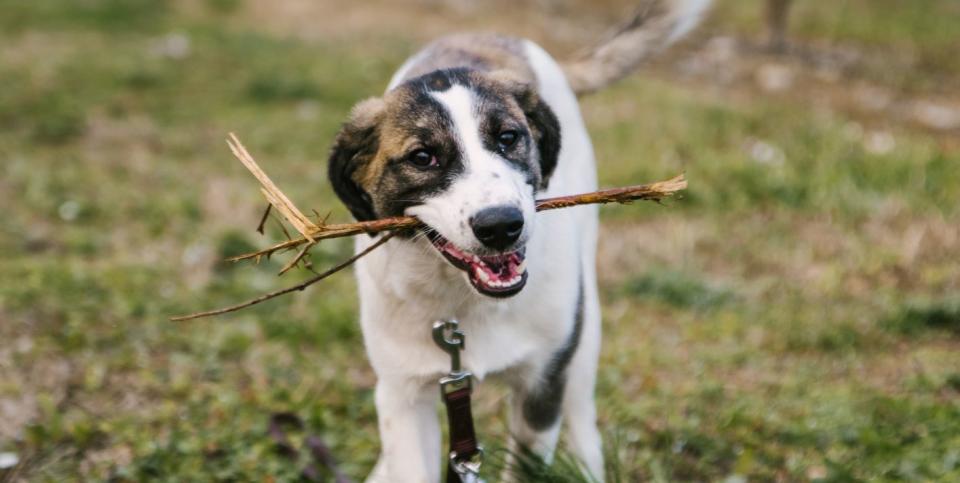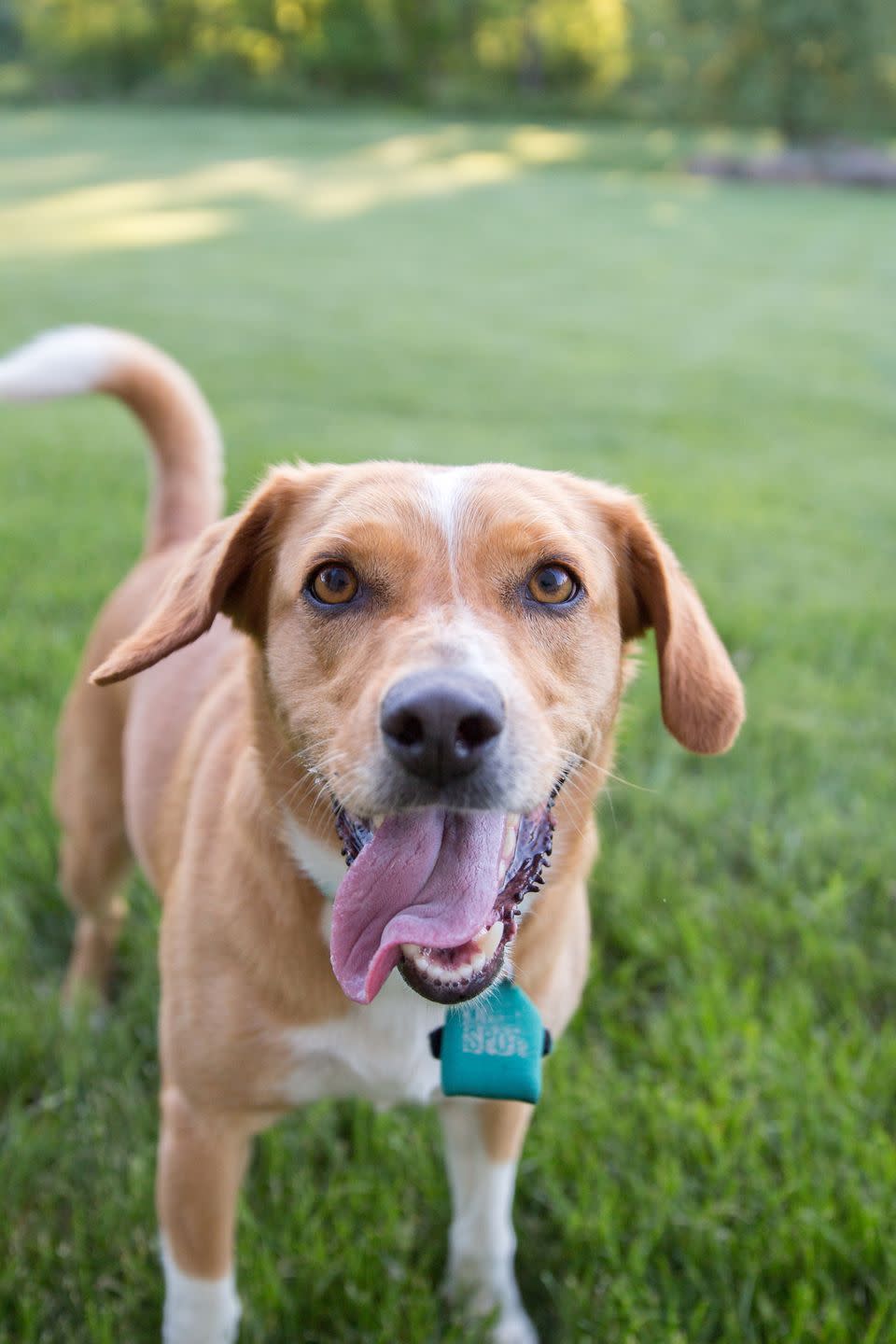15 common myths about dogs: true or untrue

Dogs are our best friends, but how much about them do you really know? From their eating habits, to nutritional needs and behaviour, there are lots of myths and misconceptions about dogs that have been passed around for decades.
To help you get to know your pup better, TeamDogs has debunked 15 of the most common dog myths that just aren't true. Take a look at them below...
1. Dogs are colour blind
While many people think dogs are colour blind, conclusions have shown that dogs have two colour receptors (cones) in their eyes. They can see in colour, however have trouble distinguishing between different shades of green and red, which will mostly just appear as greys and browns, blue and yellow tones.
2. A dry warm nose means your dog isn't well
Have you ever heard this before? According to TeamDogs, your dog's nose will all be down to weather and humidity. Much like humans, our pups can also get a runny nose when spending time in the cold.
It's worth keeping an eye open for a hot, dry nose as this can often be a sign of fever, dehydration, or even conditions like dry eye. "If your dog's dry nose is accompanied by other symptoms, like lethargy, vomiting or diarrhoea, or changes in activity or appetite, contact your vet for advice," TeamDogs tell Liverpool Echo.

3. You can't teach an old dog new tricks
This is also a myth, as dogs are great at learning quickly. While it will take an older dog a little longer, teaching them new tricks isn't impossible. If you are teaching a senior dog, ensure you make the training sessions fun, keep them positive and do it little and often. Don't forget to reward them, too.
4. Dogs only yawn when they are tired
In the language of dogs, the yawn is often used as a way to deal with anxiety and stress. You may spot your dog yawning in situations which aren't meant to make them tired, such as playing or being stroked by other people. They also use it as a way to express that they have had enough and their patience is running out.

5. All dogs are good swimmers
Some people mistakenly believe all dogs are natural swimmers. While dogs do love being in water, not all of them are good at swimming.
TeamDogs add: "The dogs that have a powerful chest and a heavy skull are not very good swimmers — bulldogs, mastiffs, dachshunds, and boxers, for example. Small dogs should be put into water in a more careful way because they're more prone to hyperthermia."
6. Dogs need to chew on bones
According to TeamDogs, bones can often do more harm than good. Long, boiled and tubular bones, for example, can injure dogs with their sharp pieces. When considering a bone for your pup, always opt for raw bones rather than home-cooked ones as they don't splinter as easily.
7. A female dog feels 'empty' if they don't have a litter
"Dogs are unable to feel broody and allowing them to have one litter before getting them neutered has no proven health or behaviour benefit for them, and could also contribute to the numbers of unwanted dogs in rescue centres," TeamDogs add.
"Neutering your female dog before their first season greatly reduces the risk of them getting breast cancer. Neutering also prevents other fatal illnesses such as womb infections (called pyometra), and prevents false pregnancies, which can cause behavioural problems."
8. If a dog is wagging its tail, it means it's friendly
A wagging tail is a form of dog communication, but what exactly does it mean? You may think it signals friendliness, but in some cases it can mean the dog is unhappy. "If a dog's body is almost motionless and it only shakes its tail, it's likely that the animal is feeling tense and may attack you," the team add.
Other signs of a wagging tail include nervousness, feeling threatened, anxiety, or submission.

9. Dogs age seven years for every human year
Breeds come in all shapes and sizes, so working out their age isn't as simple as it seems. How long a dog lives for is down to a number of key factors – not just which breed they are. For a dog to live a long and happy life, it needs suitable living conditions, proper care, an adequate hygiene routine, a healthy diet and satisfactory exercise.
Smaller breeds tend to live longer than larger breeds, including Beagles, Dachshunds and Cockapoos.
10. A little bit of chocolate is fine
Chocolate contains an ingredient called theobromine, which is poisonous to dogs and cats. Make sure to keep all chocolate, including cocoa powder and hot chocolate, out of reach of your pet. If your dog think your dog has consumed a lot of chocolate, especially if it's dark, call your vet.
11. Dogs have clean mouths
A dog's mouth is not actually any cleaner than a human mouth. Our four-legged friends love to explore the world with their mouths and noses, so you never know where they have been snooping around (or what they have been eating).
The team add: "As far as getting sick from a doggy kiss, the New York Times reports that the germs in your dog's mouth are typically specific to dogs. Some pathogens like salmonella and certain rare bacteria strains can be passed on to humans in dog saliva, but serious infections are relatively rare."

12. Dogs eat grass only if they are sick
Dogs eating grass is fairly common and completely natural. According to the Blue Cross, some of the reasons dogs eat grass can be because they find it tasty, they are bored or even if they are suffering from an upset stomach. While it can help to ease sickness, you may find your pups nibbling grass because they are bored.
13. Dogs feel guilt
Our dogs communicate a broad range of emotions to us, but there is no evidence to support the fact that they feel secondary emotions like shame or guilt. While you may stumble across cute videos of dogs feeling guilty online, it's been thought that it's actually a learned response to human reaction.
14. A well-trained dog will never bite
Dogs bite for many reasons, such as feeling fearful or frustrated, being defensive, guarding others or intimidation. Although some dogs may have never bitten anyone before, it's impossible to say that a dog would never bite.
15. I need to show my dog who is boss by being the pack leader
This is another myth which owners shouldn't believe. The team add: "Dominance based dog training is based on studies of captive wolves in the 1970s which popularised the theory that "alpha" wolves become the leader of the pack by being aggressive towards other wolves. But science has moved on and this theory has now been debunked."
Like this article? Sign up to our newsletter to get more articles like this delivered straight to your inbox.
In need of some positivity or not able to make it to the shops? Enjoy Good Housekeeping delivered directly to your door every month! Subscribe to Good Housekeeping magazine now.
You Might Also Like

 Yahoo Finance
Yahoo Finance 